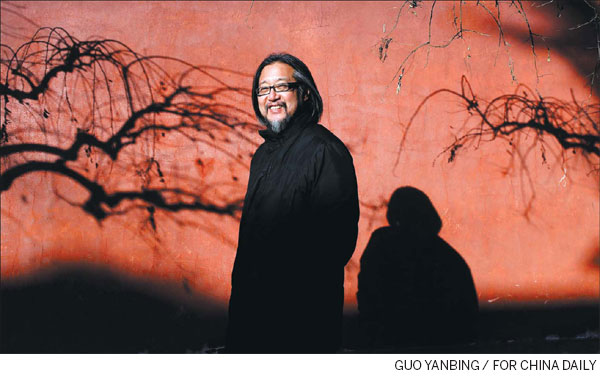Dream weaver
Updated: 2013-03-27 09:26
By Raymond Zhou (China Daily)
|
||||||||

Limelight| Stan Lai
Arguably the greatest living dramatist and impresario in Chinese-language theater sees his work as a conduit between the mundane and the sublime. In what he regards as the pinnacle of his oeuvre, Stan Lai shapes ideas into a modern-day equivalent of the Bayeux Tapestry about the emotional and spiritual impact of time, Raymond Zhou reports.
Stan Lai has a clear memory of what inspired his magnum opus.
In 1990, he saw a painting in Rome by Jan Brueghel the Elder, about a huge room full of paintings. "What if a person in a story has a dream, which spawns another story, just like paintings in a painting?" he thought.
Nine years later, while touring a French castle, he noted a portrait of its owner, a French diplomat who was stationed in Italy. "What if he was assigned to China and married a Chinese lady," Lai asked himself.
Later that year, Lai chanced upon a news story about a train collision in the United Kingdom. A few weeks later, the death toll of the accident was adjusted as someone previously counted as missing and presumed dead turned out to be unscathed. He simply walked away from the scene and didn't even go back home. "What a strange act!" Lai reflected: "If I could leave like that, no matter how much debt I've incurred or how much trouble I've caused, all would be written off. Or could that be possible?"
At the end of 1999, on a pilgrimage to India he read about a young doctor in London who conducted a conversation with an old gentleman on his deathbed.
These disparate narrative strands of life experiences, direct or indirect, fell piece by piece into a mammoth and intricate jigsaw puzzle. The next year, 2000, saw the birth of A Dream Like a Dream, the most elaborate theater work, if not the lengthiest in running time, in Chinese history. It was certainly the most ambitious to date.
This 7.5-hour play, after a 2002 revival in Hong Kong and another one in 2005, again in Taiwan, is receiving the grandest treatment yet, this time in Beijing. It will be staged at the Poly Theater April 1-14 and will tour several mainland cities and then go to Singapore in the next year or two.
Stars are drawn to Stan Lai's productions. They forfeit lucrative television or film deals to participate in projects of the theater master even though this is not a new play and the method of improvisation Lai is so famous for is not employed.
On an early March day when I visited the rehearsal hall in Beijing's 798 Art Zone, there was a palpable camaraderie. The 30 actors have been rehearsing since January except for a three-week break during February. A familial environment has been established, with some of the cast bringing food and drinks and receiving ad hoc citations posted on the wall.

 'Taken 2' grabs movie box office crown
'Taken 2' grabs movie box office crown
 Rihanna's 'Diamonds' tops UK pop chart
Rihanna's 'Diamonds' tops UK pop chart
 Fans get look at vintage Rolling Stones
Fans get look at vintage Rolling Stones
 Celebrities attend Power of Women event
Celebrities attend Power of Women event
 Ang Lee breaks 'every rule' to make unlikely new Life of Pi film
Ang Lee breaks 'every rule' to make unlikely new Life of Pi film
 Rihanna almost thrown out of nightclub
Rihanna almost thrown out of nightclub
 'Dark Knight' wins weekend box office
'Dark Knight' wins weekend box office
 'Total Recall' stars gather in Beverly Hills
'Total Recall' stars gather in Beverly Hills
Most Viewed
Editor's Picks

|

|

|

|

|

|
Today's Top News
Boston bombing suspect reported cornered on boat
7.0-magnitude quake hits Sichuan
Cross-talk artist helps to spread the word
'Green' awareness levels drop in Beijing
Palace Museum spruces up
First couple on Time's list of most influential
H7N9 flu transmission studied
Trading channels 'need to broaden'
US Weekly

|

|







